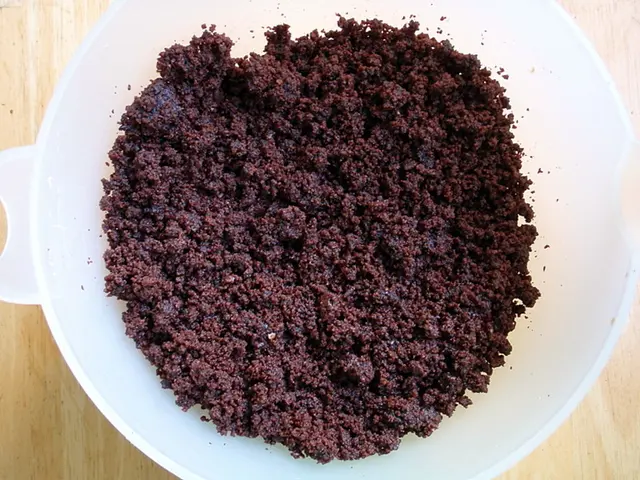Investigative Body's Examination
Soft Lumps Under the Skin: A Guide to Lipomas
Lipomas are squishy, detectable lumps beneath the skin. Made up of fat cells nestled within a thin casing and situated in the subcutaneous fat tissue, they can also crop up in muscle tissue. These growths are benign, although in extremely rare instances, a malignant tumor known as a liposarcoma might hide beneath them. Some people may inherit a susceptibility to developing lipomas.
Should a Lipoma be Removed?
Individuals discovering a squishy mass beneath their skin should consult a dermatologist. Lipomas feel soft and can be maneuvered under the skin without causing pain. If the harmless fatty growth is undisturbed and not a cosmetic concern, it does not necessitate removal. However, if it rapidly enlarges or causes discomfort due to pressing on nearby nerves or deep muscle tissue, it could warrant surgical extraction.
Lipoma or Liposarcoma: Benign or Malignant Tumor?
The scientific community is undecided about whether a liposarcoma can develop from a lipoma. Nevertheless, it is certain that lipomas are widespread afflicting 1-2% of the population. In contrast, liposarcomas are exceptionally rare, affecting approximately 2.5 people per million population per year. Proper assessment in a dermatological setting is crucial to correctly identify these tumors, with fine-needle aspiration biopsies available for suspicion of a malignant one. Liposarcomas constitute a subtype of soft tissue sarcomas and are managed in specialized centers.
Removing Lipomas
A lipoma should be excised in a manner that leaves little or no scarring or indentations. The method of removal depends on the lipoma's size and location. In some cases, expertise from plastic surgery techniques might be required. Problems with lipoma removal can occur when the lipoma is large, located near sensitive areas like the face, or situated in deep tissue layers.
Potential lipoma removal techniques include liposuction, a technique that removes the fatty mass with a thin needle, and laser lipolysis, which heats and destroys the lipoma using a laser. Smaller lipomas may not require suction following laser lipolysis.
Removal Costs
Cosmetic removal of a lipoma is the patient's financial responsibility. Removal due to medical reasons may be covered if the lipoma's pressure on adjacent tissue causes numbness, if its location is problematic, or if a malignant tumor is suspected. Prices depend on the lipoma's type and location, ranging between 100-2,000 euros, with local anesthesia or general anesthesia fees also factored into the total cost.
Lipomatosis: Another Form of Abnormal Fat Accumulation
Lipomas are solitary, limited, benign fatty tumors. Lipomatosis describes the occurrence of widespread, sometimes enormous, tumors. The cause remains unknown. Alcohol consumption and certain metabolic disorders may be associated with some subtypes of lipomatosis. Lipomatosis dolorosa disproportionately affects women: The fatty tumors under the skin cause pain in the extremities.
Skin Expert
Prof. Dr. med. Riccardo Giunta, Specialist in Plastic Surgery, Hand SurgeryDirector of the Department of Hand Surgery, Plastic Surgery, Aesthetic Surgery, Klinikum LMU Munich
Atheroma Removal: How to Get Rid of Grease Bags
[Read More]
Lichen Ruber or Nodular Eczema: Diagnosis and Therapy
[Read More]
Acne Recognition and Treatment
[Read More]
Guest Appearance on TV:
BR Fernsehen | Health! | 03.06.2025 | 19:00 hrs
Keywords: Medical Therapy, Skin
- If a lipoma is causing discomfort due to pressing on nearby nerves or deep muscle tissue, it may require medical therapies or even surgical extraction to alleviate the pain.
- In some cases, aesthetically troubling lipomas can be removed via specialized techniques, such as liposuction or laser lipolysis, which may be covered by health insurance depending on the reasons for removal.
- Proper diagnosis and treatment are essential when dealing with suspicious growths, as lipomas can sometimes hide underlying malignant tumors like liposarcomas, necessitating specialist care in managing these rare conditions.







